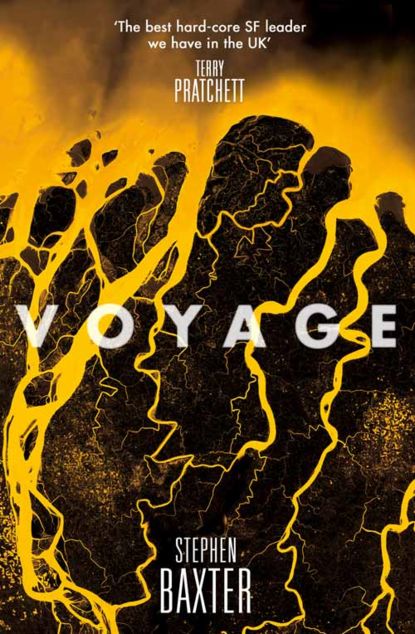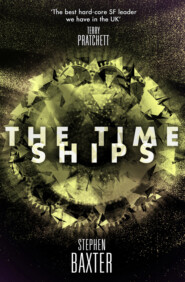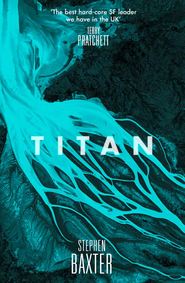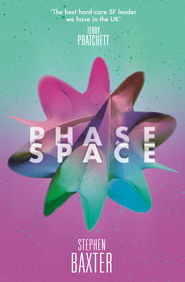По всем вопросам обращайтесь на: info@litportal.ru
(©) 2003-2024.
✖
Voyage
Автор
Год написания книги
2018
Настройки чтения
Размер шрифта
Высота строк
Поля
Thank you very much. I’m grateful to President Nixon for his hospitality toward me today, and I’ll ask him to pass on my very best regards when he sees you on the Hornet on Thursday.
Muldoon steeled himself to speak. ‘I look forward to that very much, sir.’
Then, following Armstrong’s lead, he raised his gloved hand in salute, and turned away from the camera.
He felt perplexed, troubled. It was as if Earth, above, was working on him already, its huge gravity pushing down on him.
He would have to find a new goal, that was all.
What, he mused, if Kennedy’s fantastic Mars vision came to reality? Now, that would be a project to work on.
Maybe he could join that new program. Maybe he could be the first man to walk on three worlds. That would be one hell of a goal to work toward: fifteen, twenty more years of direction, of shape to his life …
But to do that, he knew, he’d have to get out from under all the PR hoopla that was going to follow the splashdown.
For him, he suspected, returning to Earth was going to be harder than journeying to the Moon ever was.
He loped away from the TV camera, back toward the glittering, toy-like LM.
Saturday, October 4, 1969 Nuclear Rocket Development Station, Jackass Flats, Nevada
A smell of burning came on the breeze off the desert, and mixed with the test rig’s faint stench of oil and paint The scents were unearthly, as if York had been transported away from Nevada.
I read somewhere that moondust smells like this, she thought. Of burning, of ash, an autumn scent.
In 1969, Natalie York was twenty-one years old.
In Ben Priest’s Corvette they’d made the ninety-mile journey from Vegas to Jackass Flats in under an hour.
At the Flats, Mike Conlig was there to meet them and wave them through security. This late in the evening, the site was deserted save for a handful of security guys. When the three of them – York, Priest, and Petey, Priest’s son – climbed out of Ben’s Corvette, York noticed how the car was coated with dust, and popped as it cooled.
Nevada was huge, empty, its topography complex and folded, cupped by misshapen hills. The sun was hanging over the western horizon, fat and red, and the day’s heat was leaching quickly out of the air. The ground was all but barren. York recognized salt-resistant shadscale and creosote bushes clinging here and there, and the occasional pocket of sagebrush. Good place to test out a nuclear rocket, York thought. But – my God – what soul-crushing desolation.
In bursts of quick jargon, Mike and Ben started discussing some aspect of the test results they’d been reviewing that day. If York had learned one skill in too many hours in college bars and common rooms – she was finishing up her own BS in geology at UCLA – it was how to tune out someone else’s specialty. So she let Mike and Ben talk themselves out, and walked a little way away from them.
Ben Priest’s son Petey, at ten, was a lanky framework of muscle and energy; he ran ahead of the others, his blond hair a shining flag in the last of the daylight.
The test site was laid out as a rectangle confined by roads, to the south, and rail tracks, to the north. They were walking out west – away from the control buildings where the car was parked – toward the static test site, Engine Test Facility One.
This test station was cupped in an immense dip in the land delimited by two great fault blocks: the Colorado Plateau and Wasatch Range to the east, the Sierra Nevada range to the west. The station – with its isolated test stands and bits of rail track and handful of shabby tar-paper shacks – looked overwhelmed by the echoing geology of the desert, reduced to something shabby, trivial.
They reached the test facility. The assembly was maybe thirty feet high, its geometry crude, complex and mysterious. York made out a sleek, upright cylindrical form enclosed by a gantry, a boxy thing of girders. The stack was scuffed, patchy, unpainted. The whole thing was mounted on a flatwagon on the rail track, hooked up to a rudimentary locomotive. Big pipes ran out of the rig and off to other parts of the test station; in the distance she saw the gleam of spherical cryogenic tanks: liquid hydrogen, she guessed.
Petey Priest had his face pressed to the fence around the test facility, so that the wire mesh made patterned indentations on his face; he stared at the rig, evidently captivated.
York watched Conlig and Priest together.
Mike Conlig was a native Texan. At twenty-seven he was a little shorter than York; his build was stocky, his engineer’s hands callused and scarred, and his jet-black hair, which he wore tied back in a pony-tail, showed his Irish extraction. Just now, a slight paunch was pushing out his T-shirt.
York had met Mike half a year ago, at a party at Ricketts House at Caltech, which was a half-hour drive from UCLA. York had gone out there on a kind of dare; women weren’t admitted to Caltech. Natalie enjoyed his fast, lively mind, his genuine readiness to respect her for her intellect … and the compact muscles of his body.
She’d finished up in bed with Mike within a couple of hours.
Mike was quite a contrast to Ben Priest, she thought, looking at them together.
At thirty-one, Ben Priest was tall, wiry, and with an ear-to-ear, kindly grin. He was a Navy aviator with a dozen years’ experience, including two at the Navy’s prime flight test center at Patuxent River, Maryland – and, since 1965, he’d been a NASA astronaut, although he hadn’t yet flown in space.
York knew Mike and Ben had struck up a close relationship since Ben’s assignment here as astronaut representative on the project. She’d no doubt Mike was throwing himself into the camaraderie of the station here – guys together in their prefabricated shacks, at the frontier of technology, playing with NERVA all day, and knocking back a few each evening.
It was having a visible physical effect on Mike, she thought, if not on Ben …
Security lights were coming on all over the nuclear test rig now; they made it into a sculpture of shadows and glimmering reflections, an angular, deformed representation of a true spacecraft As if the ambitions driving the men and women who worked here had actually shaped the geometry of the place, making it into something not quite of the Earth.
While he was talking to Priest about the day’s events, Mike Conlig tried to keep a hawkeye on Natalie. She was gazing around the plant. Natalie was a little too tall, slim, intense, her hair jet-black and tied back; right now, those big Romanian-peasant eyebrows she hated so much were creased in concentration.
This visit was important to Conlig.
Strictly speaking, he and Priest were breaking NASA and AEC regs by bringing her here, to see their work close up; and certainly a kid like Petey shouldn’t be allowed here. But regulations got replaced by realism in a place as remote as this. We’re all good old boys together out here, he thought.
Anyhow, he was keen to show Natalie this place: where he worked, what he did with his life. It was worth breaking a few rules to achieve that. He wanted Natalie to see Jackass Flats through his eyes.
Natalie’s head was habitually full of suspicion and disapproval of Big Government Science like this. But the world looked different to Conlig. To him, this shabby test site was the gateway to the future: to other worlds, colonies on the Moon.
Even Mars itself.
Ben Priest was trying to explain the test rig to Natalie. He made her look more closely at the object inside the gantry, trying to get her to make sense of it. A nozzle, gracefully shaped, flared from the top toward the sky …
‘Oh,’ she said. ‘I’ve got it. It’s a rocket. There’s the nozzle, at the top of the stack. It’s a rocket, on its launch gantry. Gee. Just like Cape Kennedy.’
Ben Priest laughed. ‘Except it’s upside down.’
‘One day we’ll see this at Kennedy,’ Conlig said, aware he sounded a little defensive. ‘One day soon. Its descendants, anyhow; this poor bird is never going to fly.’
‘This is actually a late generation engine,’ Ben said. ‘Our newest pride and joy. The XE-Prime: quite close to a flight configuration. The first rigs here, ten years ago, were called Kiwis.’
‘Oh,’ York said. ‘Flightless birds.’
‘Now,’ said Ben, ‘there are a string of projects working under the generic title NERVA. For “Nuclear Engine –”’
‘“– for Rocket Vehicle Application.” I know.’
‘But we’re still restricted to building flightless birds,’ Priest mused. ‘We’re proud of this baby, Natalie. We’ve managed to get close to fifty thousand pounds of thrust with her. And we managed twenty-eight restarts. Reliability is going to be a key factor in long-haul space travel …’
Conlig watched Natalie, trying to gauge her reaction.
All of six years older than Natalie, Conlig had finished his PhD – on exotic, heat-tolerant refractory materials for lightweight fission reactors – in a near-record time.
Conlig was certain – so was Natalie, come to that – that he was heading for the top of his chosen profession. And since, if Spiro Agnew could be believed, nuclear rockets were going to be the Next Big Thing in space, that top could be a very high summit indeed. Meanwhile, York’s geology was likely to take her away for months at a time. Their relationship was going to be odd, to say the least.











